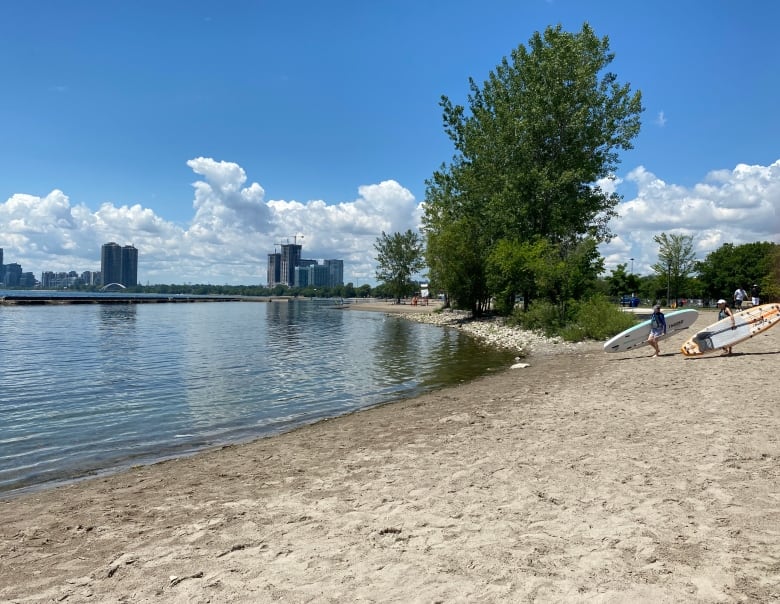
If you live in the GTA, you might want to put your beach day plans on hold.
More than 1.3 billion litres of partially treated sewage were discharged into Toronto’s waterways after the severe storm in the region on Tuesday, the city says.
Six public beaches in Toronto are currently marked unsafe for having elevated levels of E.coli. Other regions, including Durham and Halton, have also marked beaches unsafe for swimming.
Typically, treatment plants release fully treated sewage water back into Lake Ontario, according to the city’s website. But in cases of heavy rain, some of the wastewater may be bypassed, meaning it skips the secondary treatment process before being discharged into the lake.
During the severe storm Tuesday, three of Toronto’s wastewater treatment plants discharged roughly 500 Olympic-size pools of partially treated wastewater, the city said in an email to CBC News on Thursday.
“Much of the sewage that may have been deposited after the storm should be disinfected through exposure to UV through the sunlight,” the city said.
GTA beaches marked unsafe to swim in
-
Toronto: Marie Curtis Park East Beach, Sunnyside Beach, Ward’s Island Beach, Woodbine Beaches, Kew Balmy Beach, Bluffer’s Beach Park
-
Halton Region: Brant Street Beach, Bronte Beach Park, Coronation Park East, Coronation Park West, Lakeside Park Beach, South Shell Park Beach, Prospect Park Old Beach;
-
Durham Region: Paradise Beach, Beaverton South Beach, Thorah Centennial Park, Bowmanville East, Newcastle Beach Central, Kinsmen Beach, Iroquois Beach

Beaches can see a temporary increase in bacteria after significant rainfall, Toronto Public Health (TPH) said in an email to CBC News.
Exposure to contaminated water can cause gastrointestinal illness, including diarrhea, nausea, and vomiting, TPH said. Skin, ear, and eye infections are also possible, as well as respiratory illness, they said.
Beyond these bypasses, Toronto’s combined sewer system is also partly to blame for wastewater flooding the city. Combined sewers have only one pipe that carries both sewage and stormwater to the city’s wastewater plants.
During periods of heavy rain, the amount of stormwater in the sewers may exceed the system’s capacity. A mix of stormwater and sewage must then be diverted or overflow untreated directly into creeks, rivers and Lake Ontario, the city says.
Sewers or catch basins that exceed capacity may also overflow onto roadways, resulting in brown or otherwise discoloured floodwater, the city says.